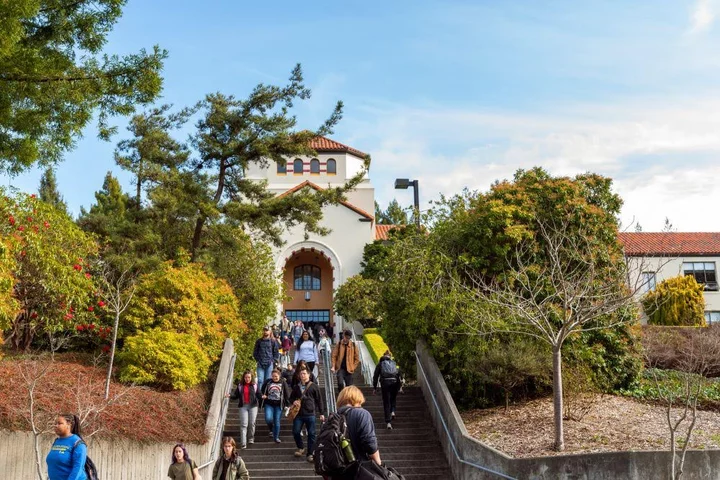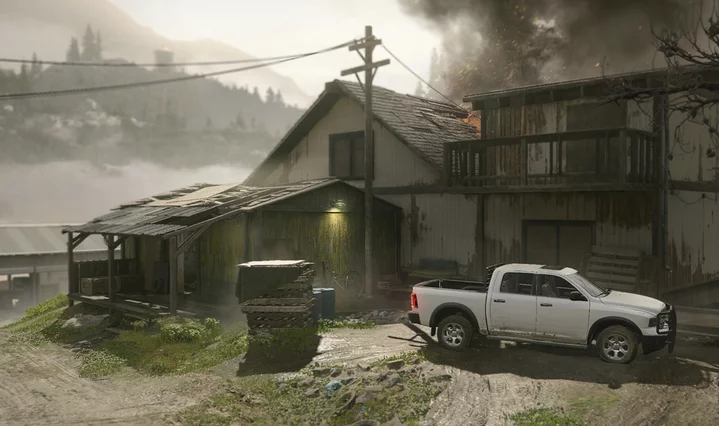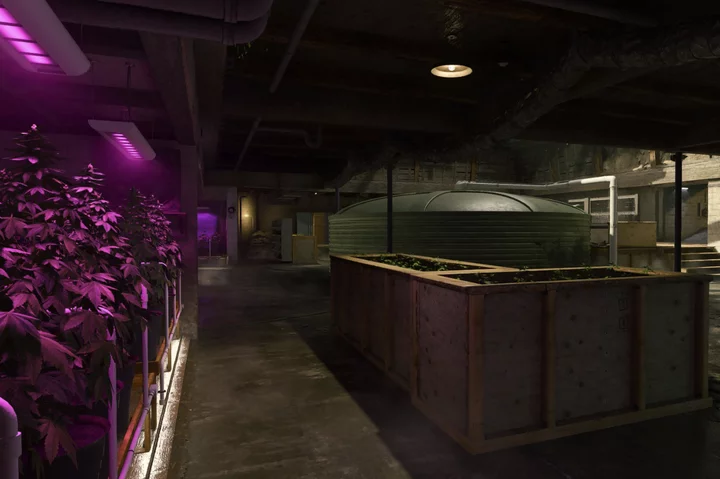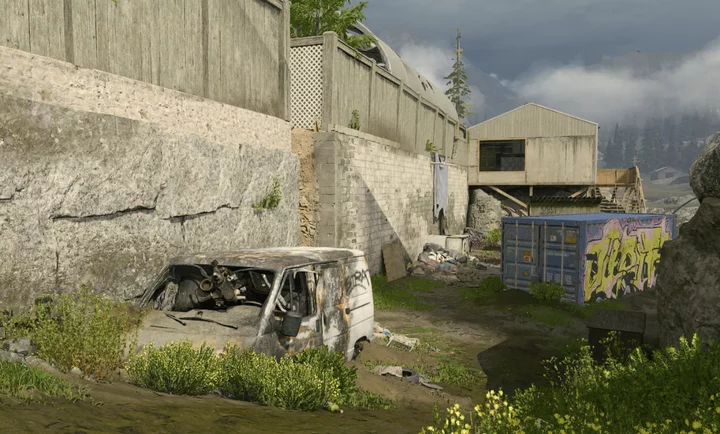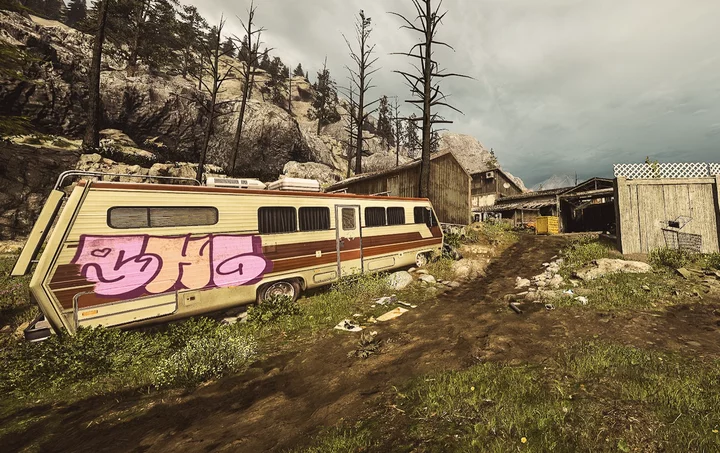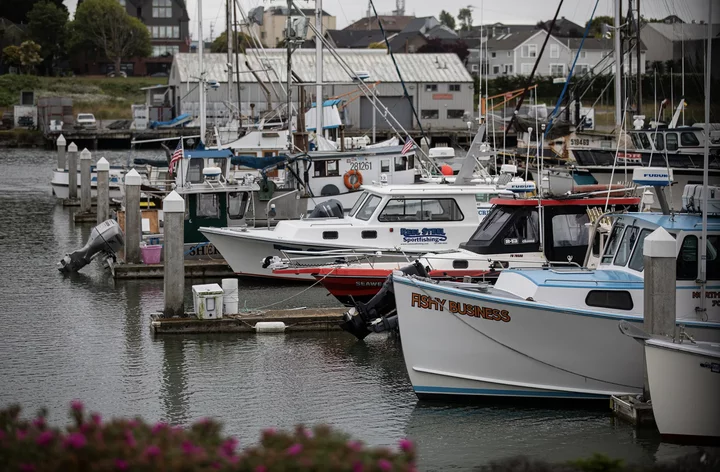Cal Poly Humboldt and UC Davis Launch Arcata-Based Program to Prepare Native Americans for Med School
LoCO Staff / Thursday, April 11, 2024 @ 4:01 p.m. / Cal Poly Humboldt , Tribes
Photo courtesy of Cal Poly Humboldt.
Press release from Cal Poly Humboldt:
Cal Poly Humboldt and the UC Davis School of Medicine have created the state’s first post-graduate education program to help prepare Native American students for medical school at UC Davis.
The Huwighurruk (pronounced hee-way-gou-duck) Tribal Health Postbaccalaureate Program seeks to enroll pre-med students passionate about providing health care to American Indian and Alaska Native communities in rural and urban areas.In the Wiyot language, huwighurruk means plants, grass, leaves, and medicine. Huwighurruk scholars will be immersed in a culturally-focused framework intertwined with science courses at Cal Poly Humboldt. The program will provide eligible students with a stipend for living and tuition costs, including those associated with MCAT preparation, and mentorship with local Native physicians.
The hope is that once students graduate from the UC Davis School of Medicine, they’ll become doctors for Native American communities in rural and urban areas that are often medically underserved due to a lack of primary care physicians. According to research from the Association of American Medical Colleges, about 50% of Native American students who apply to a medical school are not admitted; and of that, 43% never apply again. Fewer than 1% of doctors in the United States are Native American.
The Huwighurruk program is the first postbaccalaureate program in the state aimed at helping Native American students in California get into medical school while keeping a focus on Tribal traditions and values through mentorships and connections.
“In Native culture, one of the most important things is community and connection, especially feeling that connection with your family and tribe. With Indigenous peoples, we talk about the Earth, the plants, and the medicine and ceremony. It’s that connection with Native culture and the sense of community itself that students can relate to through the Huwighurruk curriculum,” says Dr. Antoinette Martinez (‘94, Psychology), a Family Medicine/OB physician at United Indian Health Services in Humboldt County and co-director of Tribal Health PRIME for UC Davis School of Medicine.
Students who complete the year-long Huwighurruk program with a 3.7 GPA or higher, score 499 or higher on the MCAT, and complete all the prerequisite courses for the UC Davis School of Medicine will receive conditional acceptance into the school, with additional funding towards tuition.
“It’s tough to get into medical school. This program aims to break down the barriers associated with applying to medical school. It’s disheartening to know that 43% of Native students never apply again, so we want to connect with those aspiring medical students to successfully recruit, retain, and train them to accomplish their goals,” Martinez says.
Martinez, along with Cutcha Risling Baldy, former chair of the Native American Studies department, will co-direct the Huwighurruk program. Biology Professor Amy Sprowles will assist with the program’s science courses. The Indian Teacher and Educational Personnel Program (ITEPP) will be the designated hub for the Huwighurruk program, which is set to begin next fall.
To apply, eligible students must be citizens or descendants of a federally recognized American Indian/Alaska Native Tribe or California Indian Roll of 1971, are residents of California, and have demonstrated a history of commitment to practice in the American Indian/Alaska Native community.
Huwighurruk is supported by a grant from the Northwest Native American Center for Excellence and funding from the UC Davis School of Medicine. In establishing the new program at Cal Poly Humboldt, UC Davis drew on its experience with a similar program called Wy’east Medicine, which is a partnership between Washington State University, Oregon Health & Science University, and UC Davis.
“We were thoughtful about choosing the right place for this program, where we knew students would be supported, where students would be able to engage with local tribes and community members, and where we would be able to come in and help support them as best we can in the building of the program. So we elected to do our program at Cal Poly Humboldt because of all the existing student resources and support,” says Charlene Green, assistant dean of admissions, outreach, and diversity at the UC Davis School of Medicine. “For us, it felt like the right decision.”
As an alumnus, Martinez attests to the excellent student resources and mentorship she received as a student at Humboldt.
“I credit Humboldt and ITEPP for supporting me through the process of completing my science coursework and believing that medical school admission was attainable. Without them, I might have given up,” Martinez said. “The connection to the ITEPP community and coursework on Native American issues helped me get through the pre-med coursework. The community and cultural integration at Humboldt are huge pluses for Huwighurruk students going through this process.”
UC Davis has been offering a successful post-baccalaureate premed program for years to assist college graduates from disadvantaged backgrounds in becoming more competitive applicants for medical school.
UC Davis’ California Postbaccalaureate Consortium will be hosting a virtual informational session for special reapplicant sessions for medical school applicants on Monday, April 22, from 3-4 p.m. For more information about the Huwighurruk program, contact tribalhealth@ucdavis.edu.
BOOKED
Today: 9 felonies, 11 misdemeanors, 0 infractions
JUDGED
Humboldt County Superior Court Calendar: Today
CHP REPORTS
0 Us101 (HM office): Animal Hazard
ELSEWHERE
RHBB: Pedestrian Fatally Struck by Bus on Giuntoli Lane in North Arcata
NCJ: Sheriff’s Office Identifies Suspect Killed Near Blue Lake
Mad River Union: Tsunami advisory issued for West Coast
NCJ: UPDATE: West Coast Tsunami Advisory After M8.7 Quake Off Russia
(PHOTOS) The Harbor District’s Big Ocean Outfall Pipe Got Exposed by Major Beach Erosion From Winter Storms
Ryan Burns / Thursday, April 11, 2024 @ 2:49 p.m. / How ‘Bout That Weather , Local Government
Photo via the HBHRCD.
###
A week ago we wrote about severe beach erosion along the North Coast caused by the uncommonly long, El Niño-juiced winter weather pattern from which we just emerged.
Recent beachgoers near Samoa encountered more evidence of this phenomenon: two big industrial pipelines that are usually buried underground have been exposed, their girth emerging from the sand dunes to drape across the beach slope like massive, mechanized worms trying to escape into the sea.
A currently unused outfall pipe on the peninsula. | Photo by Matthew O’Brien.
###
The northernmost pipeline is owned and operated by the Humboldt Bay Harbor, Recreation and Conservation District. Its landward segment is constructed of 36-inch diameter high-density polyethylene (HDPE), with a portion still encased in the original 48-inch redwood stave pipe. The part below the low tide line, which extends about a mile and a half out to sea, is concrete-encased steel.
This pipe was installed in the mid-1960s to discharge up to 40 million gallons per day of untreated pulp mill wastewater, which got dumped into the near-shore surf zone, causing health problems among local surfers. In the 1990s, following a legal settlement with the nonprofit Surfrider Foundation and the U.S. Environmental Protection Agency, the outfall line was rebuilt and extended.
Eventually, Nordic Aquafarms intends to use this outfall pipe to discharge more than 10 million gallons per day of treated wastewater in operating its land-based aquaculture facility, producing yellowtail kingfish. (The Coastal Commission approved a discharge permit in November.)
But for the time being, it’s just being used to discharge relatively small volumes of treated wastewater effluent from the town of Samoa, plus a bit of stormwater runoff from the Harbor District’s Redwood Marine Terminal II property, on the other side of New Navy Base Road.
Since the pipe is mostly empty these days, it’s not uncommon for the top to get exposed along the beach, typically in wintertime when winds from the northwest combine with large tidal swells to erode coastal sand. But this year the erosion was particularly extreme, and by late March more than 200 feet of pipe was completely exposed.
Pounded by waves, sections of the exterior redwood casing have broken off and been carried away [or, as one reader suggested, possible stolen], allowing the flexible HDPE pipe to “float” up out of the sand. Below are a couple of labeled photos from the Harbor District showing how the pipe looked on March 14.
The Harbor District blocked off the public parking area with boulders.
###
Reached by phone this morning, Harbor District Executive Director Chris Mikkelsen said staff was amazed by the effects of winter storms on the Samoa Beach.
“The amount of [pipe] exposure was unbelievable,” he said.
Staff immediately called in the engineering firm of SHN and applied for an emergency coastal development permit. At tonight’s meeting of the Harbor District’s Board of Commissioners, staff plans to offer a status update on the emergency repair work that has already begun and possible options for a more permanent fix.
The engineers at SHN have offered the following warning:
If the pipe is not secured, it will continue to move about as the waves and tides act on it, potentially damaging the HDPE pipe or causing a failure of the pipe. Vehicles also travel along this segment of beach periodically and could crash into the pipe and damage or destroy it if it is not buried and covered with protective material.
The pipe is a critical piece of infrastructure conveying treated wastewater effluent to an approved location offshore. If the pipe were to fail or require more significant repairs, service to the Town of Samoa WWTF could be interrupted, resulting in significant hardship for the community and potential negative environmental impacts.
In order to secure the pipeline and armor it against the elements, the District enlisted SHN to conduct emergency storm damage repairs. Over the past couple of days, work crews with tractors have dug a three- to five-foot-deep trench in the beach sand alongside and slightly beneath the pipe. Once reburied, large bags of rock were placed atop the pipe to keep it from floating out of the sand again.
When we say “large bags of rock,” we’re talking about roughly four tons per bag, with bags placed along both sides of the pipe and on top of it for the entire length of its exposure.
Excavators dug a new trench for the outfall pipe. | Image via HBHRCD.
Rock bags stacked atop the re-buried pipe. | Image via HBHRCD.
Placing massive rock bags atop the pipeline in the surf zone. | Photo via HBHRCD.
###
This emergency repair work is expected to take up to two weeks to complete. As for a longer-term fix, Mikkelsen said the Army Corps of Engineers is exploring the possibility of depositing dredge spoils from Humboldt Bay onto local beaches “to achieve beach nourishment and, over time, rebuild the beaches.”
In response to the winter storms, the county declared a state of emergency in January, and Mikkelsen said the Harbor District may seek FEMA assistance to offset the emergency repair work.
In the meantime, Mother Nature will do some repair work of her own. Troy Nicolini, meteorologist-in-charge at the Eureka office of the National Weather Service, said the weather has already changed in a way that will benefit local shorelines, with winds and surf patterns depositing sand back on the wave slope.
“I know it seems like the end of the world,” Nicolini said regarding this year’s severe erosion, “but we’re just now switching to a summertime pattern … so beaches should be rebuilt really quickly.”
Photo by Terry Cook.
Photo by Terry Cook.
The marine outfall pipe comes ashore on the beach just southwest of Samoa on the Samoa Peninsula.
‘We Must Do Better’: Rep. Jared Huffman Responds to Statewide Salmon Fishery Closure
LoCO Staff / Thursday, April 11, 2024 @ 2:39 p.m. / Environment , Fish
Federal fishery managers unanimously voted this week to cancel all commercial and recreational salmon fishing in California.| Photo: Michael Humling, U.S. Fish & Wildlife Service
PREVIOUSLY:
###
From the office of Rep. Jared Huffman:
Washington, D.C. – Today, U.S. Representative Jared Huffman (CA-02), Ranking Member of the House Natural Resources Subcommittee on Water, Wildlife, and Fisheries, released the following statement regarding the Pacific Fishery Management Council’s vote to cancel salmon fishing season off the California:
“Last year’s California’s salmon season closure was a crushing blow for our state. And now we’re facing the unprecedented back-to-back closures of the entire California salmon fishery. This is a new low – it’s not just devastating, it’s unacceptable,” said Rep. Huffman. “We just finished getting federal approval for last year’s California salmon disaster. I was relieved that with the reforms I’ve passed in Congress and all the political pressure we worked to build, the federal approval process was somewhat faster. But the amount of disaster money is not nearly enough for the needs of fishermen, tribes, businesses, and families who depend on healthy salmon fisheries – and now we have to start all over again for second consecutive disaster year.
“We must do better. On disaster relief, the state must speed up the process for quantifying impacts and the federal government must approve disaster funds faster and at higher levels. But we must also acknowledge that this scramble for federal fishery disaster funds is not the solution to the terrible downward spiral for California salmon fisheries. The solution is to prevent fishery disasters. That requires confronting wrongheaded policies that are killing salmon – failing to protect cold water supplies, starving rivers and tributaries of flows salmon need to survive, and over-pumping in the Delta during sensitive times for migrating salmon,” Huffman concluded.
In February of this year, Rep. Huffman secured $20 million in relief funds through the National Oceanic and Atmospheric Administration (NOAA) for California’s fishing community. This followed continued pressure from the congressman to secure this relief for the 2023 Sacramento River Fall Chinook and Klamath River Fall Chinook and inland salmon fisheries disasters.
In April 2023, Huffman, Padilla, and Panetta led their colleagues in an urgent letter to President Joe Biden and Secretary of Commerce Gina Raimondo, calling for them to swiftly declare a federal fishery disaster. Earlier that month, Rep. Huffman held a press conference with Speaker Emerita Nancy Pelosi, Representative Kevin Mullin, and fishing industry stakeholders to call attention to this disaster and highlight the people who will bear the brunt of the impacts of closing the salmon season. In addition to regular follow up with NOAA, Rep. Huffman held a call directly with NOAA Administrator Dr. Rick Spinrad to continue the pressure and encourage him to prompt action.
As part of his long-standing efforts to improve disaster relief for fisheries, Congressman Huffman was able to help secure an additional $300 million for fishery disaster declarations Fiscal Year 2023 Omnibus Appropriations bill. Congress also authorized new bipartisan fishery disaster relief language based on Congressman Jared Huffman and Senator Roger Wicker’s Fishery Resource Disasters Improvement Act. This language streamlines the process for declaring a federal fishery disaster and helps to quickly provide relief to affected communities. It also extends eligibility for federal fishery disaster funds not only to commercial fisheries, but also to charter fishing businesses and impacted tribes.
Humboldt Man Sentenced to 14 Years for Selling Fentanyl, Weapons, Among Other Charges
Andrew Goff / Thursday, April 11, 2024 @ 2:19 p.m. / Crime
Humboldt County Office of the District Attorney press release:
Today, Honorable Judge Steven M. Steward sentenced 43-year-old Ryan M. Doucet to serve 14 years in state prison. Doucet was convicted at jury trial in November 2023 of multiple crimes including child endangerment, possession of fentanyl with intent to sell, being a felon in possession of firearms, selling assault style weapons, and possession of destructive devices.
District Attorney Stacey Eads commends the Humboldt County Sheriff’s Office Neighborhood Watch Program and Bayside residents directly impacted by Doucet’s crimes for working together to help make our community a safer place.
PREVIOUSLY:
FINALLY! Shoot Up Your Friends in the New ‘Humboldt Growhouse’ DLC Map From ‘Call of Duty’
Andrew Goff / Thursday, April 11, 2024 @ 1:57 p.m. / Cannabis
Humboldt County, the latest war-torn video game hellscape | Activision
Just existing in Humboldt County can, at times, feel like you’re living in a video game. Well, now it’s official.
Earlier this month, Activision released a series of new multiplayer maps as downloadable content (DLC) for its latest release in the Call of Duty franchise, Call of Duty: Modern Warfare III. Essentially, these maps are virtual arenas where you can challenge your gamer friends to an all-out war. In their wisdom, Activision decided that a marijuana grow operation — specifically one in Humboldt — would be a suitable setting for spraying bullets at your fellow man.
Inside “the growroom.”
“Prepare for a strong aroma when descending upon the Growhouse facility in Humboldt County, California,” reads a page on the Call of Duty website, which goes on to list various obstacles players can use as cover from their enemies — an RV, a pickup truck, a water tank, an outhouse, a burnt car, a scissor lift, etc. The site also speaks of the degradation and disrepair of the “backwoods narcotics den nestled in remote foothills,” noting that “the roof of the main barn seems to have been struck by missile fire, and the rafters are still smoldering.” Fun!
Honestly, LoCO thinks the craggy granite hills that surround Activision’s “Growhouse” makes it look less like Humboldt County and more like eastern California but, if you’d like to judge for yourself, allow YouTuber “StoneyDogTv” to take you on a little video tour, above.
Having not spent any time in the Call of Duty universe, we can’t gauge whether or not “Growhouse” is any fun to play or not, so we will defer to the following review from a random Twitter gamer.
Growhouse is a terrible map #MW3 #CallofDuty
— Alan (@ATrecida) April 5, 2024
Hopefully this attention does not negatively impact our local industry.
No telling whether this operation has an active permit, but there does seem to be significant environmental degradation and illegal grading. Not setting a great example.
# # #
PREVIOUS HUMBOLDT VIDEO GAME EXPERIENCES:
Sheriff’s Deputies Track Down, Arrest Trinidad Area Man for Making Violent Threats
LoCO Staff / Thursday, April 11, 2024 @ 1:18 p.m. / Crime
Press release from the Humboldt County Sheriff’s Office:
On 04/09/2024 at about 4:40 p.m., Humboldt County Sheriff’s deputies were dispatched to a residence on Berry Road in Trinidad regarding a report of threats against another individual.
Upon arrival, the suspect Michael Matthew Black had left the scene. During the investigation, it was discovered that Black had threatened another individual with a hatchet. Deputies then searched the greater Trinidad area for his truck that he was reported to be associated with and located it at his residence.
There had been other reported incidents where Black had threatened other individuals with weapons within the last few weeks and had displayed aggressive behavior.
Deputies developed the probable cause to arrest Black for Criminal Threats and other criminal charges. Black was believed to be armed and dangerous. Deputies attempted contact with Black at his residence, however, he fled into the wooded area behind his home on a tractor. Black was acting erratically, refusing surrender commands. Black made suicidal statements and threatened to shoot law enforcement if they did not leave his property. Black went back into his residence and barricaded himself inside. Deputies on scene attempted to deescalate the situation, and after several minutes Black exited the front door and deputies were able to approach Black and he subsequently surrendered without further incident.
Black was arrested and booked into the Humboldt County Correctional Facility on charges of Threaten Crime with Intent to Terrorize (PC 422(A)), Brandishing a Deadly Weapon (PC417 (A)(1)), Elder Abuse (PC 368(B)(1)), Felon in Possession of a Firearm (PC29800(A)(1)), Felon in Possession of Ammunition (PC30305(A)(1)), Obstruct/Resist a Police Officer (PC69(A)), & Probation Violation (PC 1203.2(A)(1)).
Anyone with information about this case or related criminal activity is encouraged to call the Humboldt County Sheriff’s Office at (707) 445-7251 or the Sheriff’s Office Crime Tip line at (707) 268-2539.
California Salmon Fishing Banned for Second Year in Row
Rachel Becker / Thursday, April 11, 2024 @ 7:07 a.m. / Sacramento
Fishing boats docked at the marina at Humboldt Bay in Eureka on June 6, 2023. Photo by Larry Valenzuela, CalMatters/CatchLight Local
In a devastating blow to California’s fishing industry, federal fishery managers unanimously voted yesterday to cancel all commercial and recreational salmon fishing off the coast of California for the second year in a row.
The decision is designed to protect California’s dwindling salmon populations after drought and water diversions left river flows too warm and sluggish for the state’s iconic Chinook salmon to thrive.
Salmon abundance forecasts for the year “are just too low,” Marci Yaremko, the California Department of Fish and Wildlife’s appointee to the Pacific Fishery Management Council, said last week. “While the rainfall and the snowpacks have improved, the stocks and their habitats just need another year to recover.”
State and federal agencies are now expected to implement the closures for ocean fishing. Had the season not been in question again this year, recreational boats would likely already be fishing off the coast of California, while the commercial season typically runs from May through October.
In addition, the California Fish and Game Commission will decide next month whether to cancel inland salmon fishing in California rivers this summer and fall.
The closure means that California restaurants and consumers will have to look elsewhere for salmon, in a major blow to an industry estimated in previous years to be worth roughly half a billion dollars.
“It’s catastrophic,” said Tommy “TF” Graham, a commercial fisherman based in Bodega Bay who now drives a truck delivering frozen and farmed salmon and other fish. “It means another summer of being forced to do something you don’t want to do, instead of doing something you love.”
About 213,600 Sacramento River fall-run salmon — a mainstay of the fishery — are estimated to be swimming off the coast. Though that’s an improvement over last year, the forecast remains the second-lowest on record since the fishery was closed in 2008 and 2009, Yaremko told the Pacific fishery council.
The numbers this year, plus the fact that the forecasts for salmon returning to spawn are routinely overestimated, “add concern,” Yaremko said.
Many in the fishing industry say they support the closure, but urged state and federal officials to do more to improve conditions in the rivers salmon rely on. Fishing advocates and environmentalists have lambasted Gov. Gavin Newsom’s administration for failing to prioritize water quality and flows to protect salmon in the vital Bay-Delta watershed.
“Our fishing fleets and coastal communities can not be the only ones making sacrifices to save these fish,” said Sarah Bates, who owns a commercial fishing boat called the Bounty, berthed at Fisherman’s Wharf in San Francisco. “Water policy needs to take the health of our river ecosystems seriously.”
The closure comes as the fishing industry still awaits disaster aid promised from last year’s salmon fishery closures, which state officials estimated to have cost about $45 million. The fishing industry says that’s a vast underestimate.
“Some fishermen have already lost their businesses and many will in the coming months,” said RJ Waldron, who runs a charter fishing business out of the East Bay. Last year’s closure dried up his customers, and he put his sportfishing boat up for sale months ago.
“My dream of being a charter boat owner is very much a nightmare now.”
###
CalMatters.org is a nonprofit, nonpartisan media venture explaining California policies and politics.

